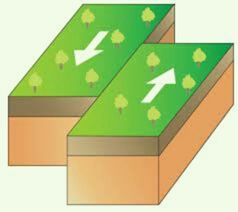Why are there more earthquakes in India these days? Here are the causes of earthquakes in Delhi-NCR | Tech Reddy
[ad_1]
A few days ago, on November 9 people in Delhi-NCR reported tremors during the night. The magnitude of this earthquake was 6.3 on the Richter scale. Then just three days after the incident, on the evening of November 12, another 5.7 magnitude tremor was felt. 2 earthquakes in the same week. Moreover, a 4.1 magnitude earthquake hit Himachal Pradesh recently. Why are news of earthquakes becoming more common these days? Have things to worry about? Here are all the explanations you want to know.
The northern states of the country, including Punjab and Delhi, have been experiencing frequent tremors for the past few days. Recently, people in Delhi and NCR regions felt two high-magnitude tremors in the same week.
If we look at the records of last few decades, many earthquakes have hit Delhi NCR. The frequency of these earthquakes is gradually increasing. Now, the burning question is why these earthquakes are becoming more common. Before knowing this answer, let’s know why earthquakes happen first!
Why do earthquakes happen? Brief explanation!

Image source: DK Find Out
Remember your school geography class. Earthquakes are caused by the earth’s tectonic plates. When tectonic plates beneath the Earth’s surface move against each other, earthquakes occur.
Now, why earthquakes are common in India?
There are some specific reasons behind the increase in the level of earthquakes in the country. Because Nepal and parts of India are located on the boundary of two major tectonic plates (fault zones), the country experiences frequent earthquakes in the north and northeast.
The Himalayas formed when the Indian plate moved towards the Nepalese plate. While the formation of the Himalayas is good news, the collision of these two plates made both India and Nepal vulnerable to earthquakes.
Finally let’s talk about Delhi-NCR
Now, the last question we are going to answer for you is why earthquakes are common in Delhi-NCR.
Let’s consider this fact. Delhi lies on Sohna fault line, Delhi-Moradabad fault line and Mathura fault line. All three are active seismic fault lines.
In the case of Gurgaon, the region is placed on not one or two but a total of seven fault lines, making Gurgaon the most dangerous part of Delhi-NCR when it comes to earthquakes.
Now, Delhi has always been vulnerable to earthquakes as it is located in the fourth-highest seismic zone out of a total of five classified by the Bureau of Indian Standards.
However, the news of relief, if not good news, is the fact that Delhi has not been the epicenter of any earthquake so far, nor is it likely to be in the future.
You may also like to read:
Earthquake again! Earthquake felt twice this week in Delhi and surrounding areas!
[ad_2]
Source link
.png&w=500&h=260)

